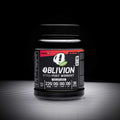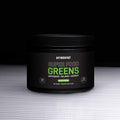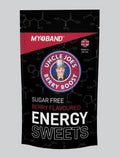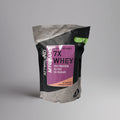More of Moringa or Matcha?
Posted by PROPROTEIN LTD ADMIN

Welcome to the Moringa vs Matcha contest! Matcha has been on the scene for some time now, but whether you are aware of it or not, it has a trending little rival trying to claim its spotlight…. Moringa. However, they both start with the same letter, they both are a similar colour. Is there anything distinctly different between them that makes one more worthy of our attention? Well, let's put both contenders to the test and get some clarity on this issue. May the best green powder win!
Moringa
What is it?
Moringa, commonly known as the ‘drumstick’ or ‘horseradish’ tree, is a plant native to India. Its drought resistant and frost fighting properties make it an easy plant to cultivate in various environments. It has been traditionally used as a herbal treatment of many diseases in African and Asian countries. The eclectic richness of nutrients it provides deemed it so worthy to be named “The Miracle Tree” by past time physicians. (1)
What are the benefits?
Moringa is considered a highly nutritious plant that includes a vast variety of antioxidants, vitamins and minerals which have been identified to enhance health. In fact, it's been said that it contains 10 times more vitamin A than carrots, 17 times more calcium than milk, 15 times more potassium than bananas and a massive 25 times more iron than spinach! So let's get into its health benefits: (1)
- Anti-diabetic properties: Several studies have shown that moringa has blood sugar-lowering effects which in turn reduce the risk of developing type 2 diabetes. Promising results show that it could also be a natural option of helping regulate blood sugar levels for type 1 diabetics. A particular study with diabetic participants showed that adding moringa to your meal could slow down the absorption of sugar into the bloodstream by 21%. (1)
- Anti-cancer properties: Cancer is a common health concern worldwide with 367,000 cancer cases per year in the UK. Research suggests that its abundant antioxidant properties discourage cancer growth. Studies identified Moringa's to have a rich content of isothiancyte and quercetin, both powerful antioxidants, which have contributed to alleviating inflammatory effects that can develop into chronic diseases such as cancer and high blood pressure. (1) (2) (3) (4) (8)
- Anti-Microbial Properties: Moringa is considered to protect against bacterial growth, with most benefit coming from the seeds of the plant. (1) (9)
- The UK dietary recommendation of zinc should not exceed 25mg and Moringa has been shown to be a dietary source high in this mineral which promotes sperm production in males and aids energy-yielding reactions throughout body cells. (1) (5)
- Moringa’s high calcium levels make it a great food to increase calcium intake. This mineral is essential for maintaining a healthy bone mass and keeping blood calcium levels balanced, which if not controlled can have dangerous consequences such as heart attacks. (1) (6)
- Iron is a mineral that many people find difficult to obtain in adequate amounts. However, it is necessary for the vital function of oxygen transport to all body organs as well as oxygen storage within the muscle tissue. Seeing that moringa is packed full with this mineral it can be an ideal natural alternative to iron tablets for treating iron anaemia (lack of iron). (1)
- Oestrogen boosting properties: Oestrogen is a critical hormone that plays an integral role in the reproductive system of females and the development of female characteristics. It’s recently discovered additional responsibility in bone formation gives it a profound necessity in human health. Moringa is a plant containing plenty of phytosterols which are oestrogen like compounds of plants that may help to enhance oestrogen production in humans. This property makes the plant very beneficial for breastfeeding mothers because it helps to stimulate breast milk production. (1)
- Most of the plant including the seeds can be consumed making it a very sustainable dietary source. The oil that is extracted from the seeds known as the Ben oil is rich in healthy omega 3 and 6 fats which are critical for maintaining healthy cell membranes. (1) (7)
- A complete plant protein: This means moringa contains all 9 of the essential amino acids (EAAs) that we need to consume in our diet for various bodily functions including maintaining healthy muscle mass. (1) (25)
- Moringa is caffeine-free so if you want all the benefits without the stimulant effects which matcha has, this is the better choice between the green powders! (9)
How do you consume it?
Moringa is commonly processed into a powder which you can obtain from health stores and organisations. It is traditionally consumed as a herbal tea, however, there are new fun ways to have it like adding it to smoothies, baked goods or, why not try it in your protein shakes for that protein and nutrient boost to enhance those workouts!
Any Cons?
There are only a few noted side effects of moringa however, it is advised to inform your doctor before you begin consuming it especially if you are taking any medication.
Some side effects and negatives of moringa include:
- The high iron content of iron can lead to iron overload which is linked to gastrointestinal complaints and increasing the risk of hemochromatosis. Hence, the advised daily intake is typically not to exceed 70g. (1)
- Moringa may possess anti-infertility properties. (10)
- A major sensory issue may be the taste of moringa as it has natural bitter compounds that can be unpleasant on the palate of certain individuals.
- Lower blood pressure and heart rate. (10)
- Most research studying moringa's effects on blood sugar levels have been conducted through animal studies. Even though there are a few human studies, more long-term human-based studies need to be carried out to further prove its efficacy regarding this particular issue. (11) (12)
Matcha
What is it?
Matcha means ‘powdered tea’. The green leaves are processed into a fine powder from the Camellia Sinensis plant that allows for an effortless infusion of hot water which is how it's traditionally been consumed in its native region of China and Japan for thousands of years.
The distinct vibrant green hue of the plant derives from the high chlorophyll content within the leaves. This is due to the method of covering the plant from direct sunlight for approximately 21 days. (13)
What are the benefits?
Matcha is best known for its numerous health claims and thus a popular green powder choice. Its evidence-based health-enhancing effects include:
- Rich in antioxidants: Matcha is renowned for its high content of naturally occurring antioxidants called catechins, that are chemical compounds that fight against free-radical damage within the cell. One study even suggests that these catechins can stimulate more antioxidant activity within cells, reinforcing its cancer-protective benefits! (13) (14) (15)
- Enhances nerve activity: The robust caffeine content in Matcha makes it an ideal stimulant to start your day on a high with the addition of many other nutritive compounds! The caffeine acts on the nervous system further boosting energy metabolism in the nerves, which in turn stimulates the rate of nerve function in the brain improving alertness, mental focus and memory. Matcha actually contains more caffeine than green tea and dried tea, with 1g containing 35mg of caffeine compared to dried tea leaves that contain only 11mg per 1g. (13) (16) (17)
- Rich in theanine: The protection from the sunlight increases the theanine (an amino acid- building blocks of protein) content which may induce stress relief. However, it is important to note that this calming sensation will be experienced more readily from decaf or low caffeine matcha. Not only does theanine have calming properties, but it also boosts mood by elevating dopamine (‘a feel-good reward sensation hormone’) levels. (13)
- Aids weight loss: Matcha can increase your energy output by speeding up fat metabolism (utilisation of fat for energy within the cell) helping you to burn off those calories, with one study showing fat breakdown was increased by 17% during moderate-intensity exercise due to the consumption of green tea. Additionally, due to Matchas low calorific value of 15Kcal per 5grams (1teaspoon), you won’t have to worry about this green goodness messing up your calorie controlled diet! (18) (19) (20)
- Improve heart health: Going back to the catechins, (antioxidants) these molecules found in matcha have been identified to support good cardiovascular health from various clinical and experimental trials. The cardioprotective benefits include the prevention of blood clot formations and reducing LDL (“bad”) blood cholesterol levels which contribute to the buildup of fatty plaques and inflammation (body's response to infection or injury) within arteries (blood vessels) that can lead to heart disease. (21) (22) (23)
- Matcha has a milder sweet grassy taste compared to its rivalry moringa, so if you are new to the green powerhouse party or hypersensitive to bitter tastes this may be the better option to begin with. (24)
How do you consume it?
As previously noted, matcha has been consumed as a herbal tea for thousands of years. However, in these modern times, there are trendy new ways to consume matcha, which include:
- Having it in a capsule form
- Making matcha latte
- Putting it in baked goods- e.g. pancakes, waffles
- Blending it into smoothies
- Sprinkling it in your porridge or salads
- Why not try Matcha flavoured ice-cream too!
Any Cons?
Matcha has numerous benefits and although it is generally considered safe for consumption on a daily basis, it is still a highly caffeinated substance, just like your milky brew, which means it should be consumed in moderation. Excessive caffeine intake or caffeine sensitivity can overstimulate the nervous system inducing irritability, headaches, heart palpitations, anxiety and even disrupting your sleep quality. (13) (16)
Other negatives of matcha include:
- Unfortunately, there is low-quality matcha sold on the market, with similar but duller green pigment. This is NOT the real deal as it won’t provide you with the entirety of wholesome benefits that you get from high-quality matcha. Therefore, you really have to hunt high and low for the right quality matcha which is usually sourced from Japan. (24)
- Not a complete plant protein source like it's contender moringa. (25) (26)
- Relatively expensive (27)
The Bottom line: So will it be More of Moringa or Matcha?

The moment of truth has arrived! Which one will be the star of the show?
Matcha consumption has been an East Asian delicacy since the 8th century. Its nutritional use clearly has profound health and wellness effects which has made it a strong contender. However, its expensive nature and inability to provide adequate levels of proteins may set it back.
Even though the moringa plant has been around for thousands of years it is recently getting the attention it deserves in the wider public, and rightly so due to the sheer amount of health benefits it presents. But longer human-based studies still need to be carried out to further reinforce its already noted health claims. If you are able to overcome the slight bitter taste of moringa, then on this occasion it takes the gold for being an upcoming trendy protein and nutrient rich plant, bejewelled with many health properties. No wonder it's called the miracle tree!
But at the end of the day don't let our conclusion influence your own. Go and experiment to identify the one that best suits you and your health needs, and be marvelled by the power of moringa or matcha. The choice is yours.
References
(1) Gopalakrishnan, L., Doriya, K., & Kumar, D. (2016). Moringa oleifera: A review on nutritive importance and its medicinal application. Food Science And Human Wellness, 5(2), 49-56. doi: 10.1016/j.fshw.2016.04.001 https://www.sciencedirect.com/science/article/pii/S2213453016300362#!
(2) William, F., Lakshminarayanan, S., & Chegu, H. (1993). Effect of some Indian vegetables on the glucose and insulin response in diabetic subjects. International Journal Of Food Sciences And Nutrition, 44(3), 191-195. doi: 10.3109/09637489309017439 https://www.tandfonline.com/doi/abs/10.3109/09637489309017439
(3) Edwards, R. L., Lyon, T., Litwin, S. E., Rabovsky, A., Symons, J. D., & Jalili, T. (2007). Quercetin reduces blood pressure in hypertensive subjects. The Journal of nutrition, 137(11), 2405–2411. https://doi.org/10.1093/jn/137.11.2405
(4) Larson, A. J., Symons, J. D., & Jalili, T. (2012). Therapeutic potential of quercetin to decrease blood pressure: review of efficacy and mechanisms. Advances in nutrition (Bethesda, Md.), 3(1), 39–46. https://doi.org/10.3945/an.111.001271
(5) National Health Service (NHS), (2020). Vitamins and Minerals- Others. Retrieved 25 August 2020, from https://www.nhs.uk/conditions/vitamins-and-minerals/others/
(6) J. Asiedu-Gyekye, S. Frimpong-Manso, C. Awortwe, D. A. Antwi, A. K. Nyarko, "Micro- and Macroelemental Composition and Safety Evaluation of the Nutraceutical Moringa oleifera Leaves", Journal of Toxicology, vol. 2014, Article ID 786979, 13 pages, 2014. https://doi.org/10.1155/2014/786979
(7) Lalas, S., & Tsaknis, J. (2002). Characterization of Moringa oleifera Seed Oil Variety “Periyakulam 1”. Journal Of Food Composition And Analysis, 15(1), 65-77. doi: 10.1006/jfca.2001.1042 https://core.ac.uk/download/pdf/196706752.pdf
(8) Cheenpracha, S., Park, E. J., Yoshida, W. Y., Barit, C., Wall, M., Pezzuto, J. M., & Chang, L. C. (2010). Potential anti-inflammatory phenolic glycosides from the medicinal plant Moringa oleifera fruits. Bioorganic & medicinal chemistry, 18(17), 6598–6602. https://doi.org/10.1016/j.bmc.2010.03.057
(9) Brilhante, R., Sales, J., Pereira, V., Castelo-Branco, D., Cordeiro, R., & de Souza Sampaio, C. et al. (2017). Research advances on the multiple uses of Moringa oleifera : A sustainable alternative for socially neglected population. Asian Pacific Journal Of Tropical Medicine, 10(7), 621-630. doi: 10.1016/j.apjtm.2017.07.002 https://www.sciencedirect.com/science/article/pii/S1995764516307143
(10) Whitmer, M. (2019). Moringa Tree and Cancer: Side Effects and Research Studies [Blog]. Retrieved from https://www.asbestos.com/blog/2019/11/26/moringa-tree-cancer-research/
(11) Mbikay M. (2012). Therapeutic Potential of Moringa oleifera Leaves in Chronic Hyperglycemia and Dyslipidemia: A Review. Frontiers in pharmacology, 3, 24. https://doi.org/10.3389/fphar.2012.00024
(12) Jaiswal, D., Kumar Rai, P., Kumar, A., Mehta, S., & Watal, G. (2009). Effect of Moringa oleifera Lam. leaves aqueous extract therapy on hyperglycemic rats. Journal of ethnopharmacology, 123(3), 392–396. https://doi.org/10.1016/j.jep.2009.03.036
(13) Unno, K., Furushima, D., Hamamoto, S., Iguchi, K., Yamada, H., & Morita, A. et al. (2018). Stress-Reducing Function of Matcha Green Tea in Animal Experiments and Clinical Trials. Nutrients, 10(10), 1468. doi: 10.3390/nu10101468 https://www.ncbi.nlm.nih.gov/pmc/articles/PMC6213777/
(14) Kavanagh, K. T., Hafer, L. J., Kim, D. W., Mann, K. K., Sherr, D. H., Rogers, A. E., & Sonenshein, G. E. (2001). Green tea extracts decrease carcinogen-induced mammary tumor burden in rats and rate of breast cancer cell proliferation in culture. Journal of cellular biochemistry, 82(3), 387–398. https://doi.org/10.1002/jcb.1164
(15) Siddiqui, I. A., Malik, A., Adhami, V. M., Asim, M., Hafeez, B. B., Sarfaraz, S., & Mukhtar, H. (2008). Green tea polyphenol EGCG sensitizes human prostate carcinoma LNCaP cells to TRAIL-mediated apoptosis and synergistically inhibits biomarkers associated with angiogenesis and metastasis. Oncogene, 27(14), 2055–2063. https://doi.org/10.1038/sj.onc.1210840
(16) Caffeine: How much is too much?. (2020). Retrieved 27 August 2020, from https://www.mayoclinic.org/healthy-lifestyle/nutrition-and-healthy-eating/in-depth/caffeine/art-20045678
(17) Dietz, C., Dekker, M., & Piqueras-Fiszman, B. (2017). An intervention study on the effect of matcha tea, in drink and snack bar formats, on mood and cognitive performance. Food research international (Ottawa, Ont.), 99(Pt 1), 72–83. https://doi.org/10.1016/j.foodres.2017.05.002
(18) Venables, M. C., Hulston, C. J., Cox, H. R., & Jeukendrup, A. E. (2008). Green tea extract ingestion, fat oxidation, and glucose tolerance in healthy humans. The American journal of clinical nutrition, 87(3), 778–784. https://doi.org/10.1093/ajcn/87.3.778
(19) Hodgson, A., Randell, R., & Jeukendrup, A. (2013). The Effect of Green Tea Extract on Fat Oxidation at Rest and during Exercise: Evidence of Efficacy and Proposed Mechanisms. Advances In Nutrition, 4(2), 129-140. doi: 10.3945/an.112.003269
(20) FoodData Central: MATCHA ORGANIC GREEN TEA POWDER, MATCHA. (2020). Retrieved 27 August 2020, from https://ndb.nal.usda.gov/fdc-app.html#/food-details/1037661/nutrients
(21) Zheng, X. X., Xu, Y. L., Li, S. H., Liu, X. X., Hui, R., & Huang, X. H. (2011). Green tea intake lowers fasting serum total and LDL cholesterol in adults: a meta-analysis of 14 randomized controlled trials. The American journal of clinical nutrition, 94(2), 601–610. https://doi.org/10.3945/ajcn.110.010926
(22) Anandh Babu, P., & Liu, D. (2008). Green Tea Catechins and Cardiovascular Health: An Update. Current Medicinal Chemistry, 15(18), 1840-1850. doi: 10.2174/092986708785132979
(23) Arts, I. C., Hollman, P. C., Feskens, E. J., Bueno de Mesquita, H. B., & Kromhout, D. (2001). Catechin intake might explain the inverse relation between tea consumption and ischemic heart disease: the Zutphen Elderly Study. The American journal of clinical nutrition, 74(2), 227–232. https://doi.org/10.1093/ajcn/74.2.227
(24) Higuera, V. (2019). A Detailed Guide to Matcha and the Health Benefits of the Buzzy Green Tea [Blog]. Retrieved from https://www.everydayhealth.com/diet-nutrition/diet/matcha-benefits-risks-weight-loss-effect-top-sellers/
(25) Khalid Abbas, R., Elsharbasy, F., & Fadlelmula, A. (2018). Nutritional Values of Moringa oleifera, Total Protein, Amino Acid, Vitamins, Minerals, Carbohydrates, Total Fat and Crude Fiber, under the Semi-Arid Conditions of Sudan. Journal Of Microbial & Biochemical Technology, 10(2). doi: 10.4172/1948-5948.1000396 https://www.longdom.org/open-access/nutritional-values-of-moringa-oleifera-total-protein-amino-acid-vitaminsminerals-carbohydrates-total-fat-and-crude-fiber-under-the-1948-5948-1000396.pdf
(26) Morgan, S. (2019). The Dark Truth About Matcha Tea [Blog]. Retrieved from https://matchaalternatives.com/blogs/the-ma-blog/the-dark-truth-about-matcha-tea
(27) Why Are Matcha and Gyokuro So Expensive?. (2020). [Blog]. Retrieved from https://itsmorethantea.wordpress.com/2018/07/19/why-are-matcha-and-gyokuro-so-expensive/
TAGS:


















